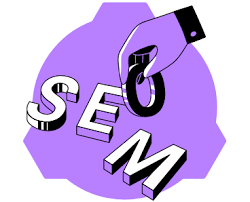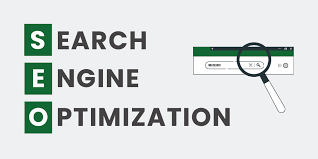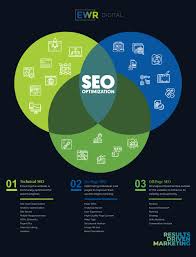SEO and SEM: Unleashing the Power of Online Visibility
In today’s digital age, having a strong online presence is crucial for businesses to thrive. Search engine optimization (SEO) and search engine marketing (SEM) are two powerful strategies that can significantly impact a company’s visibility and success in the online realm. While they share similar goals, SEO and SEM differ in their approaches, each offering unique benefits to businesses.
Let’s start with SEO. Simply put, SEO focuses on optimizing a website to improve its organic (non-paid) search engine rankings. By implementing various techniques such as keyword research, on-page optimization, link building, and content creation, SEO aims to make a website more relevant and valuable to search engines like Google.
Why is this important? Well, when users search for specific keywords or phrases related to your business, you want your website to appear at the top of the search results. Studies have shown that users tend to click on websites that rank higher organically because they perceive them as more trustworthy and credible.
By investing in SEO, you can increase your website’s visibility, attract targeted organic traffic, and ultimately drive more conversions and sales. It’s a long-term strategy that requires continuous effort but can yield significant returns over time.
On the other hand, SEM involves paid advertising campaigns that appear alongside organic search results. The most common form of SEM is pay-per-click (PPC) advertising through platforms like Google Ads. With SEM, businesses bid on specific keywords relevant to their products or services. When users search for those keywords, their ads appear at the top of the search results or on relevant websites within the ad network.
SEM offers immediate visibility since ads are displayed prominently above organic results. It allows businesses to target specific demographics, locations, and interests effectively. Moreover, with PPC advertising models like Google Ads’ pay-per-click system, you only pay when someone clicks on your ad – making it a cost-effective way to drive targeted traffic to your website.
While SEO and SEM are distinct strategies, they can work together synergistically to maximize results. By combining the power of organic rankings through SEO with targeted paid advertising through SEM, businesses can achieve optimal visibility online.
It’s essential to have a comprehensive digital marketing strategy that includes both SEO and SEM. Conducting thorough keyword research, optimizing your website for search engines, and creating compelling content are crucial for long-term success. At the same time, running well-structured PPC campaigns can provide immediate exposure and drive traffic to your site.
Remember that the world of SEO and SEM is constantly evolving. Search engine algorithms change frequently, new technologies emerge, and consumer behaviors shift. Staying up-to-date with industry trends and best practices is vital to ensure your online marketing efforts remain effective.
Whether you choose to focus on SEO, SEM, or a combination of both, investing in these strategies will undoubtedly contribute to improving your online visibility, driving more qualified traffic to your website, and ultimately boosting your business’s growth in today’s competitive digital landscape.
5 Essential Tips for SEO and SEM Success
- Utilize Keywords – Identify the appropriate keywords for your website and use them strategically throughout your content.
- Update Content Regularly – Fresh content is key to improving SEO rankings, so make sure to update your website regularly with new and relevant information.
- Optimize Images – Make sure all images on your website are optimized for SEO by using alt tags and descriptive file names.
- Build Links – Link building is an important factor in SEO, so make sure to reach out to other websites and blogs in order to create backlinks that lead back to your site.
- Monitor Results – Use analytics tools such as Google Analytics or Bing Webmaster Tools in order to track the performance of your SEO efforts over time and adjust accordingly if needed.
Utilize Keywords – Identify the appropriate keywords for your website and use them strategically throughout your content.
Utilize Keywords: Unlocking the Potential of SEO and SEM
Keywords play a crucial role in optimizing your website for search engines. By identifying the right keywords and strategically incorporating them into your content, you can significantly enhance your website’s visibility and attract targeted traffic. Let’s delve into this important tip for SEO and SEM.
Firstly, it’s essential to conduct thorough keyword research. Put yourself in the shoes of your target audience and think about the words or phrases they would use when searching for products or services like yours. There are various tools available, such as Google Keyword Planner, that can assist you in finding relevant keywords with high search volumes and relatively low competition.
Once you have identified your target keywords, it’s time to strategically place them throughout your content. Start with optimizing your website’s meta tags, including the title tag and meta description. These elements provide concise summaries of what each page is about and appear in search engine results.
Next, focus on incorporating keywords naturally within the body of your content. Aim for a balance between readability for human visitors and optimization for search engines. Avoid overstuffing keywords as it can negatively impact user experience and lead to penalties from search engines.
Remember that keywords should be relevant to each specific page or piece of content on your website. By aligning keywords with the intent behind each page, you increase the chances of attracting visitors who are genuinely interested in what you have to offer.
Additionally, consider utilizing long-tail keywords – longer, more specific phrases that target a niche audience. Long-tail keywords often have lower competition but higher conversion rates since they cater to users with clear intent.
It’s important to note that keyword usage should go beyond just written content. Incorporate relevant keywords into image alt text, URLs, headings (H1 tags), and even anchor text for internal linking purposes. This holistic approach ensures that search engines can understand the context of your content better.
Lastly, regularly monitor and analyze your keyword performance. Keep track of how your chosen keywords are ranking in search engine results pages (SERPs) and make adjustments as needed. SEO and SEM are ongoing processes, so staying vigilant and adapting to changes in keyword trends is crucial.
In conclusion, utilizing keywords strategically is a fundamental aspect of SEO and SEM. By identifying the appropriate keywords for your website and incorporating them naturally into your content, you can improve your website’s visibility, attract targeted traffic, and increase the likelihood of conversions. Remember to conduct thorough research, optimize meta tags, create high-quality content, and monitor keyword performance regularly. With this approach, you can unlock the potential of keywords to propel your online presence to new heights.
Update Content Regularly – Fresh content is key to improving SEO rankings, so make sure to update your website regularly with new and relevant information.
Update Content Regularly: The Key to SEO Success
When it comes to improving your website’s SEO rankings, one important tip stands out: regularly updating your content. Search engines love fresh, relevant information, and by keeping your website up-to-date, you can significantly enhance its visibility and search engine rankings.
Why is updating content so crucial for SEO? Well, search engines like Google are constantly crawling websites for new content. When they discover that your site offers fresh and valuable information, they perceive it as more relevant and useful to users. This can lead to higher rankings in search results, ultimately driving more organic traffic to your website.
Regularly updating your website with new and relevant content also signals to search engines that your site is active and engaging. It shows that you are invested in providing the best user experience possible. This can help build trust and credibility with both search engines and users alike.
So how can you effectively update your content? Here are a few strategies:
- Publish New Blog Posts: Start a blog on your website and publish regular posts related to your industry or niche. Share insights, tips, news, or even success stories. This will not only attract readers but also provide an opportunity to naturally incorporate relevant keywords into your content.
- Refresh Existing Content: Review your existing web pages and identify opportunities for improvement or updates. Add new information, statistics, or examples that make the content more current and valuable for visitors.
- Create Engaging Multimedia: Incorporate videos, infographics, or images into your content strategy. These types of media not only enhance user engagement but also improve the overall quality of the page in the eyes of search engines.
- Stay Relevant with Trending Topics: Keep an eye on industry trends or current events related to your business. Create content around these topics to demonstrate that you’re at the forefront of industry knowledge.
Remember that quality is just as important as frequency when it comes to updating content. Ensure that your new content is well-written, informative, and provides value to your audience. Avoid keyword stuffing or creating thin, low-quality content as these tactics can have a negative impact on your SEO efforts.
Updating your website regularly with fresh and relevant content is an effective strategy to improve your SEO rankings. By demonstrating to search engines that you are actively engaged in providing valuable information, you can increase your website’s visibility and attract more organic traffic. So, don’t neglect the power of regularly updating your content—it’s a key ingredient for SEO success!
Optimize Images – Make sure all images on your website are optimized for SEO by using alt tags and descriptive file names.
Optimize Images for Enhanced SEO: The Power of Alt Tags and Descriptive File Names
When it comes to optimizing your website for search engines, many people tend to overlook the importance of image optimization. However, optimizing images can have a significant impact on your website’s SEO performance. By utilizing alt tags and descriptive file names, you can improve your website’s visibility and accessibility in search engine results.
Alt tags, or alternative text, are brief descriptions that provide context to search engines about the content of an image. When search engine crawlers analyze your website, they cannot “see” images like humans do. Instead, they rely on alt tags to understand what the image represents. By including relevant keywords in your alt tags, you can help search engines better index and rank your website.
Additionally, alt tags are crucial for accessibility purposes. They assist visually impaired users who rely on screen readers to navigate websites. By providing accurate and descriptive alt text for your images, you ensure that everyone can understand the content of your site.
Descriptive file names also play a role in image optimization. When saving an image file, avoid generic names like “IMG_001.jpg” or “photo1.png.” Instead, use descriptive file names that reflect the content of the image and incorporate relevant keywords. This not only helps search engines understand what the image is about but also contributes to better user experience.
By optimizing images with alt tags and descriptive file names, you improve your chances of appearing in image searches as well. Many users utilize search engines’ image search features to find specific visuals related to their queries. By optimizing your images properly, you increase the likelihood of attracting organic traffic from these searches.
Remember that while optimizing images is essential for SEO purposes, it’s equally important not to compromise on quality or load times. Compressing images without sacrificing visual quality ensures that your website remains fast and user-friendly – another crucial factor in SEO rankings.
Incorporating image optimization into your overall SEO strategy is a small yet impactful step that can yield significant results. By providing search engines with relevant information through alt tags and descriptive file names, you enhance your website’s visibility, accessibility, and chances of attracting targeted organic traffic.
So, the next time you upload an image to your website, take a moment to optimize it properly. Craft descriptive alt tags and use meaningful file names that align with your content and target keywords. By doing so, you’ll be one step closer to maximizing the SEO potential of your website’s images.
Build Links – Link building is an important factor in SEO, so make sure to reach out to other websites and blogs in order to create backlinks that lead back to your site.
Boost Your SEO with Link Building: Creating Backlinks for Success
When it comes to optimizing your website for search engines, one crucial factor that should not be overlooked is link building. Link building involves reaching out to other websites and blogs to create backlinks that lead back to your own site. This practice plays a vital role in improving your SEO and driving organic traffic.
So, why are backlinks so important? Search engines like Google consider backlinks as a vote of confidence from other websites. When reputable sites link to yours, it signals to search engines that your content is valuable and trustworthy. As a result, search engines are more likely to rank your website higher in search results.
To start building links effectively, you need to take a proactive approach. Here are some tips:
- Seek Relevant Websites: Look for websites and blogs that are related to your industry or niche. Relevance is key because search engines value links from relevant sources more highly.
- Create High-Quality Content: Producing valuable and engaging content is crucial for attracting other websites’ attention. When you offer something unique, informative, or entertaining, other site owners are more likely to link back to your content.
- Outreach and Networking: Reach out to website owners or bloggers who might be interested in linking to your content. Personalized outreach emails can go a long way in establishing connections and convincing others of the value you bring.
- Guest Blogging: Offer guest posts on relevant websites where you can include links back to your own site within the content or author bio section. This not only helps with link building but also increases exposure and establishes you as an authority in your field.
- Monitor Your Backlinks: Keep track of the websites linking back to yours using tools like Google Search Console or third-party SEO tools. This allows you to identify any broken links or potential opportunities for further collaboration.
Remember that quality matters more than quantity when it comes to link building. Focus on acquiring links from reputable and authoritative websites rather than pursuing a large number of low-quality links. Search engines value the relevance and credibility of the sources linking to you.
Building links is an ongoing process that requires time, effort, and persistence. But the benefits are worth it. By investing in link building as part of your SEO strategy, you can improve your website’s visibility, increase organic traffic, and ultimately achieve better rankings in search engine results.
So, start reaching out to other websites and blogs today. Build those valuable backlinks that will help boost your SEO efforts and drive more qualified traffic to your site.
Monitor Results – Use analytics tools such as Google Analytics or Bing Webmaster Tools in order to track the performance of your SEO efforts over time and adjust accordingly if needed.
Monitor Results: The Key to Successful SEO and SEM
Implementing SEO and SEM strategies is just the first step towards improving your online visibility and driving traffic to your website. To ensure the effectiveness of these efforts, it is crucial to monitor and analyze the results. This is where analytics tools such as Google Analytics or Bing Webmaster Tools come into play.
By utilizing these powerful tools, you can gain valuable insights into how your website is performing in terms of organic search rankings, traffic sources, user behavior, and more. Here’s why monitoring results is essential for the success of your SEO and SEM endeavors:
- Measure Success: Analytics tools provide you with quantifiable data that allows you to measure the success of your SEO and SEM campaigns. You can track key performance indicators (KPIs) such as organic traffic growth, conversion rates, bounce rates, and keyword rankings. By regularly monitoring these metrics, you can identify what’s working well and what needs improvement.
- Identify Opportunities: Analyzing data from analytics tools helps you identify new opportunities for optimization. You can uncover keywords that are driving significant traffic or discover untapped niches that have the potential to attract a targeted audience. These insights enable you to optimize your content, adjust your targeting strategies, or explore new avenues for growth.
- Refine Strategies: Monitoring results allows you to refine your SEO and SEM strategies based on real-time data. If certain keywords are not performing as expected or if a particular PPC campaign is not delivering desired results, you can make informed adjustments to improve performance. By continuously fine-tuning your approach based on analytics insights, you can optimize your marketing efforts for maximum impact.
- Stay Ahead of Competition: In the ever-evolving landscape of online marketing, staying ahead of the competition is crucial. By monitoring results regularly, you can keep track of how your competitors are performing in search rankings and adjust your strategies accordingly. This ensures that you maintain a competitive edge and seize opportunities to outperform your rivals.
- Adapt to Changing Trends: Analytics tools help you identify trends and patterns in user behavior. By analyzing this data, you can stay informed about emerging trends, changing consumer preferences, or shifts in search engine algorithms. This knowledge empowers you to adapt your SEO and SEM strategies proactively, ensuring that you remain relevant and visible to your target audience.
Remember, monitoring results is an ongoing process. Regularly review your analytics data, set benchmarks, and establish goals to measure progress over time. By leveraging the insights provided by analytics tools, you can make data-driven decisions that optimize your SEO and SEM efforts for long-term success.
In conclusion, using analytics tools such as Google Analytics or Bing Webmaster Tools is essential for monitoring the performance of your SEO and SEM campaigns. It helps you measure success, identify opportunities, refine strategies, stay ahead of the competition, and adapt to changing trends. Embrace the power of analytics to unlock the full potential of your online marketing efforts.






